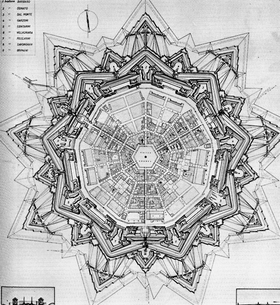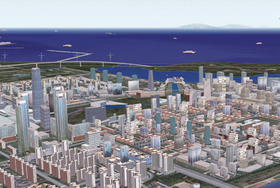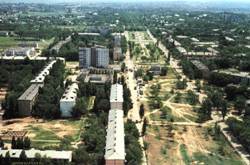INTI’s database contains information on hundreds of New Towns. We are constantly adding new items. See for example the New Towns of Palmanova (Italy, 1593), New Songdo (South Korea, 1996) or Znamensk (Russia, 1962) (for INTImi members only).
Palmanova
Palmanova, now a very picturesque small town in Northern Italy, was once build as a fortress town in the Friuli region. This region was under Venetian rule from 1470 on. In order to deal with the threat of invasions the Venice Senate ordered to build a fortress city in a strategic position of the Friulian plains, which was named Palmanova. It was not only designed as a military construction work but also according to the contemporary humanist ideas of the ideal city.
Read more
Read more
New Songdo
New Songdo City has been hailed as one of the first truly “smart” cities of the 21st century. The cutting-edge technology present in every square meter of this development is testament to the developer’s dreams of a high-tech, futuristic city. The real innovative aspect of this project, however, is the fact that the city is being sold as a package. For the first time ever, interested parties can buy a “City in a Box”, and know exactly what they are getting—down to the door handles and hinges. Every component is included in a one-time purchase, making construction infinitely faster and more streamlined. China has already purchased two Songdos, and Middle Eastern buyers are said to be interested.
Read more
Znamensk, 1962
The New Town of Znamensk was a secret city nearby the Kapustin Yar rocket launch testing site of the Russian Military in the north of the Astrakhan region. The development of the Kapustin Yar was a part of the Soviet military development program that was launched in the aftermath of World War II. Because Znamensk was part of a secret military operation it was a secret city, which meant that it was enclosed with fences and guards and not to be found on maps. Being an enclosed area the city had to be self-contained. A large amount of facilities was being built for a relatively small population. Even nowadays the small city of 30,000 inhabitants boasts twenty-one kindergartens, four middle schools, two gymnasium schools, a sports facility, and several faculties of the Astrakhan State Institute, for technical education. The most urgent question nowadays is how to maintain the city and its public buildings after the collapse of the Soviet Union.
Read more




